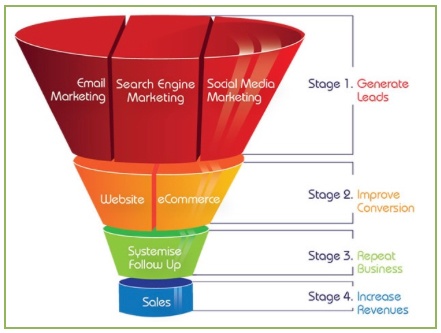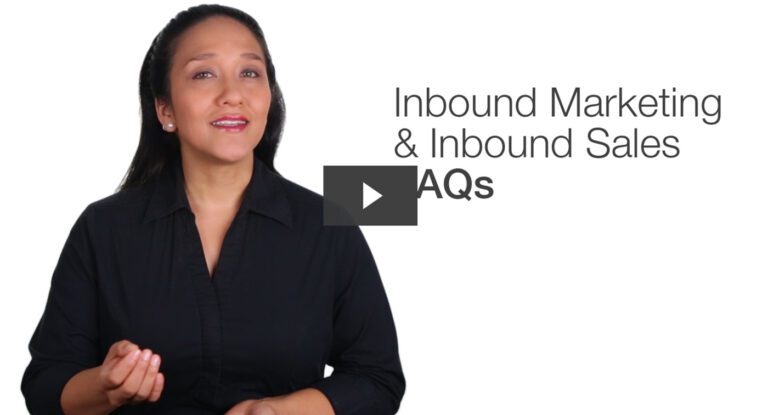Coined by HubSpot’s co-founder Brian Halligan, inbound marketing has become the standard for online business models. Said Brian, “73 percent of marketers use inbound marketing as their primary strategy.” While this change has positively affected the majority of businesses, sometimes there can be challenges.
Though most companies have made the switch from strategizing outbound campaigns to that of inbound, there are still hurdles and challenges many brands face. Are you struggling to get your inbound marketing off the ground? Or have you invested in content, but are struggling to convert ROI? Well you’re in luck because here at Direct Images Interactive we’ve identified 7 areas to help you revitalize your inbound marketing efforts now.
One of the beautiful things about inbound is that it isn’t about how much money you spend on marketing, it’s about how smart and creative you are in the content that you create and how effectively you provide value to your customers.—Kipp Bodnar
1. Content
Innovative, dynamic and engaging content will always win over dull, static and non-valuable content. Drive value always. Quality content will touch your potential clients. This is the number one challenge for companies today—the struggle for quality online content. Here are some reasons why so many companies struggle with content development:
Staffing: Do you have the staff and/or capacity to produce content?
Quality vs. Quantity: If you can produce blog posts multiple times a day, plus automate social media content on multiple platforms throughout the day, then that is awesome. If you aren’t able to produce on a consistent publishing schedule yet, you should create a scalable plan that maximizes on quality over quantity.
Topics: Know what you do and know it well. Produce content that is congruent to your brand mission and voice. Select purposeful topics for blog posts and social media posts that further your goals.
Pro Tip: Content production is an investment and is crucially important to your digital footprint. It is through this vein that potential new clients are being introduced to your business. Spend the time and resources necessary to develop or further this area within your company.
2. Client and Potential Client Feedback
The demand for innovative, dynamic and engaging content daily can be an easy target most days, but every now and again you may find the task daunting. On those challenging days consider the following:
One highly overlooked area of golden content inspiration is client feedback. Instead of approaching feedback with hesitation, go for it. It is completely FREE to ask your clients/customers for feedback on your products, services and their experience working with you. Capturing this information can help you better understand how to better service your customer and give you great content for blogs, vlogs (video blogs) and social media content. If you are not capturing this information the start-up costs are minimal and the reward is great!
Here are some questions to help guide you in the right direction:
What do your customers want to know? What questions do they typically ask?
Why do your customers and potential customers want to work with you? Is it customer service, referral or accessibility? What do they like about you?
Where is your customer located (local, national, global)?
These are just a few of the types of questions you can ask on a survey on your website or within an e-newsletter to gather more valuable information that can be used to craft tailored content that really speaks to the needs, thoughts and questions of both your potential and current customers.
3. Strategy
Inbound marketing can be much more sizeable to produce once your brand has a workable strategy. What’s your current strategy? Many inbound marketing campaigns can be streamlined and made sizable with a strategy. Are you struggling to get content out there?
Here are some tips on how to build a strategy:
Content Schedule
How frequently can you produce content? Where are you producing content? If you need help getting started, check out our toolkit checklist.Goals
What are your goals for this year? How can you organize your resources to meet them quarterly?Mixed Media
Gone are the days of static content. Did you know that 1/3 of all online activity is spent watching online video? Mixed media creates more interaction and therefore site retention.
Okay, so your company already has an inbound strategy, but something is off. You’re still not gathering the views and exposure you had expected. Perhaps now is the time for a revamp.
Pro Tip: Checkout our blog post on Inbound Marketing Best Practices to help you reorganize your approach.
Perhaps you have a solid strategy but your efforts are not tracking. Where are you marketing yourself? Are you where your ideal customers are? Do your meta tags and SEO garner traction? Where are your customers online? What social media platforms do they use most? Checkout our 2017 Marketing Trends and Tools to get equipped with what you need to hone your efforts.
4. Good Leads vs. Bad Leads
The next challenge that many companies face revolves around what some call good leads vs. bad leads. Right now, erase the notion that there are bad leads. There is no such thing as a bad lead (unless somehow you get mixed up with spam). Purchasing power relies with the client. The challenge is not to sift through potential clients to find only clients who are ready to purchase now. Rather, your efforts should engage both those ready to purchase now and those who are interested but not yet ready to purchase.
If you are capturing leads than we encourage you to engage those leads. That could be including them in your monthly e-newsletter, having a customer service follow-up, providing some kind of discount code or sharing a white paper to further engage them. Not ready to purchase now, does not necessarily mean never going to purchase. Your efforts should center on maintaining a positive relationship with the client and building brand trust—that increases brand value.
This brings us to the next point, “follow-up.”
5. Follow-up
It’s simple, just do it. At any cost, follow-up with your purchasing and inquiring clients. Overcome the hurdle of missing out on business due to poor follow-up. Show your clients how much you value their inquiry and follow-up. This will boost your reputation and continue to build that brand morale and hopefully loyalty.
Secondly, if you have a poor follow-up procedure in place now, know that this is a big area probably costing you a lot of business. Wrapping your hands around this issue immediately will drastically help you close any gaps within your business model.
Lastly, be honest about your own and your staff’s bandwidth. Do you have the staff in place and capacity to truly follow-up with all inquiries made into your business? If you do, great! If not, maybe you need to adjust a few roles, hire new staff or consider contracting support.
6. Funnel
A well rounded Inbound marketing strategy includes a funnel. Below is an example of a digital campaign funnel. The tip of the inverted pyramid is the actual the close of the sale. However before approaching that close, view the different avenues of “warm-up.”
From the above image, you can see that re-engaging clients that have worked with you or purchased from you in the past are closer to repurchasing. But consider the distance between closing and your new leads. This is why each lead should be treated as a purchasing client no matter what stage or time frame they move, from stage one to stage four.
Not having a sales funnel will present confusion and challenges for your company. Create some kind of funnel that starts by engaging new clients via SEO, social media or email marketing. Capture potential clients who visit your website by offering them value-based information: downloadable whitepapers, engaging videos and other valuable content that prompt website retention. Once you’ve successfully done those things—follow-up. There is that term again. This is a gap you have to wrap your hands around—it’s that crucial. Then you have done all you need to do to prep a close.
7. Persistence
Good things come with persistence. Apply the solutions above to challenges that you may be currently facing within your business and drive persistence with it. Work your strategy, meet your quarterly goals and expand your business. Consistency will result in brand trust and morale. As you manage following up and producing valuable content for qualified leads and clients, you will further your business with positive word-of-mouth and referrals.
Part of Newton’s Law of Motion states: An object in motion will stay in motion unless obstructed by an external force. So once you set the above in action, your momentum will only build and continue to build. Persistence is the key to creating movement and generating traction from your efforts.
Have questions or comments? Leave us a note below and we’d be happy to talk further.
Subscribe to our BLOG
Stay in touch & learn how to attract customers, become a thought leader, create effective marketing campaigns, & more.






